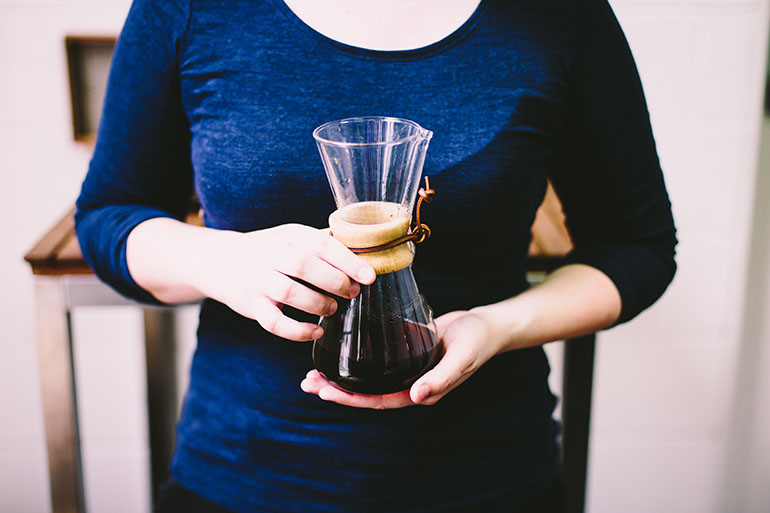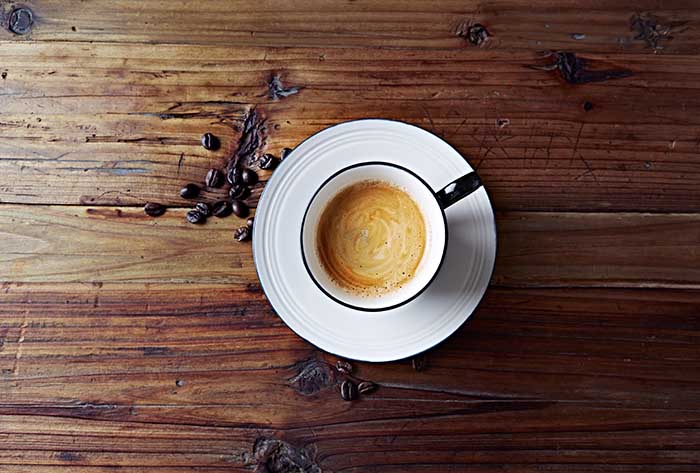The espresso brewing process can be simply defined as a small amount of water extracting coffee under pressure, resulting in the little shot that we’re all familiar with.
We can be much more specific than that and define it as finely ground coffee being dosed into the espresso basket before being levelled out by the barista. It’s then tamped in order to tightly pack it in and form a caked layer of grounds called a puck.
The espresso machine then filters the water through at a controlled temperature of 200°F/94°C. As the space above the puck fills with water, the machine applies about 130 lbs per square inch of pressure on the coffee to allow percolation of our tightly packed little coffee cake. This act of percolation allows extraction of the soluble solids, soluble gases, and insoluble solids and oils from the coffee grounds to all come together to form the flavors, aromas and body of the espresso shot that we all know and love.
See, despite its seemingly simple composition, espresso can be customised in a variety of ways. From use of light or dark roasts, or using it for drinks like cappuccino or lattes. Its strength can be tweaked, as well as its volume.
Considering that it’s a drink of only two main ingredients – water and coffee – the variety of ways it can be modified are impressive.
I know coffee baristas can be easy to make fun of, but the truth is that the craft and knowledge needed to brew the perfect cup is on the same level as cooking. It needs the right ingredients and ratios in order to get it just right.
Despite the variables that go into the drink, it’s a simple drink that falls into three key layers. Here’s an outline of each one.
#1. Espresso crema
One of the most iconic components of the espresso is the layer of crema that sits at the top of the drink. I’ve seen takes on espresso that don’t quite manage to achieve the crema at the top and it just… doesn’t… look… right.
But what makes up this beautiful layer? Crema is mainly formed of oil extracted from the coffee beans, and carbon dioxide.
Oils are particularly key here, and they’re more prevalently found on dark roast coffee beans instead of light, which is why often dark or medium-dark roasts are preferred for espresso.
Because of the oil-heavy composition of this layer, this layer can be very bitter. While I personally leave it as it is, some people prefer to stir their espresso so that this bitter level is incorporated into the drink and not drunk by itself.
#2. Espresso body
It’s easy to get hung up on the crema (and I include myself in that) but more importantly there is our body of coffee beneath that layer that houses our beloved coffee drink. This layer has most of the rich and delicious flavors and aromas that we associate with espresso, and in particular will bring out the sweetness of the shot.
The body of the drink is comprised of three things:
Firstly is our soluble coffee solids. These contribute to the taste and overall strength of the drink.
Second is the soluble gases. These make up the aroma of the coffee.
Finally we have insoluble solids. These contribute to the body and mouthfeel of the drink.
#3. The espresso heart
Beneath the crema and the body we have the heart, which comprises the very bottom layer of the shot.
This layer is deep brown in color, and this is home to the shot’s acidic qualities.
Now you know the 3 key parts of a shot of espresso, it’s time to learn the 3 variables that make a good espresso.


